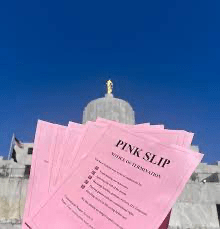One of the most persistent myths about big special events is that they all generate enormous economic returns for communities.
Event sponsors frequently try to reinforce that perception with much-ballyhooed economic impact analyses. The problem, as the Journal of Travel Research has pointed out, is that “Most economic impact studies are commissioned to legitimize a political position rather than to search for economic truth.”
The formula for economic impact analyses is simple and predictable, says The John Locke Foundation.
A special interest group that stands to benefit from the project funds an economic impact study that purports to provide hard numbers on the number of jobs, the increase in wages, and the additional output that will be generated by the project or subsidy. It makes grandiose claims about how much overall economic growth will be enhanced for the state or region generally.
Once the report is completed, the special interest group that paid for the study will tout these results in press releases that will be picked up by the largely uncritical media establishment, ensuring that the political decision makers and others who determine the fate of the project receive political cover.
Current negotiations over how much the Nevada will contribute to construction of a new $1.5 billion Las Vegas ballpark for the now Oakland Athletics are typical for how the economic impact process works.
Advocates for the project, who want the state to kick in up to 25% of the cost, argue that public money is justified because of the positive economic impact of the project.
The Athletics and Las Vegas say they are hoping to draw from the nearly 40 million tourists who visit Las Vegas annually to help fill the stadium, an inadvertent admission that the project is likely to draw from tourists the city already pulls in, not new out-of-state visitors, thus limiting any economic boost.
State lawmakers are questioning whether the stadium is worth it., according to the Associated Press. They cite a major league team with the worst record in baseball, financed in-part by a county and state struggling to fund public services including schools, which rank toward the bottom in per-pupil funding.
Economists are also questioning proposed state assistance. “Most spending that happens in and around stadiums is just reallocated local spending, so there doesn’t seem to be much net positive economic impact from the stadium,” J.C. Bradbury, a sports economics researcher and professor at Kennesaw State University in Georgia who authored The Baseball Economist, said in an interview with The Nevada Independent.“Anyone who is telling you that there is an economic benefit to a stadium deal is [lying] … I’ve studied this to death. There’s universal agreement.”
The Portland Rose Festival Foundation has been putting out a lot of economic impact numbers, too.
The foundation has been proclaiming for years that the event has a multimillion-dollar economic impact on Portland., throwing out numbers that are all over the map.
A 2001 economic impact study concluded the Festival had an economic impact of $79 million annually.
An internal, informal study in 2006 showed an economic impact of $50-60 million.
In 2009, Rose Festival Executive Director Jeff Curtis estimated the local economic impact of all the Rose Festival events that year would be $60 million.
A study that examined the festival’s economic impact in 2011 (The 2012 Portland Rose Festival Overall Economic Impact Assessment) concluded that the 2011 Festival injected $75.6 million into the local economy.
In comments about the 2023 Festival, the organization has been saying it will have a $65 million economic impact.
“Our current statement…regarding the impact, takes into account that older information, but is an internally conservative downgraded estimate because the changes that have taken place since then, including; the loss of the Rock n Roll Marathon partnership, the pandemic and other factors like the end of the Rose Cup Races at PIR and frankly, the changing weather patterns,” Rich Jarvis, Public Relations Manager at the Portland Rose Festival Foundation, said in an email.
The fact is it’s difficult to know whether any of the various economic impact numbers that have been put out with great fanfare, and repeated without question by the media, are reliable because the Portland Rose Festival keeps a tight grip on all the reports produced over the years.
“Our attendance numbers and financial information are proprietary and we don’t, as a policy, release those to the public,” Jarvis said.
This despite the fact the foundation is a 501(c)(3) non-profit with higher public disclosure responsibilities, and benefits from a subsidy from the city under which it pays just $1 a year for its offices in the former McCall’s restaurant building on the waterfront. A cherished institution, yes, but not one entitled to reject scrutiny.
The foundation’s resistance to disclosure is in stark contrast to the openness of major businesses such as Intel that has made public several analyses of the company’s economic impact on Oregon. It also runs counter to the Rose Festival’s efforts to position itself as a responsible, public-spirited organization.
Of course, even if the Foundation makes the reports public, there’s no guarantee they will be reliable. Economists who study the actual impact of big events often dismiss the economic impact estimates by event promoters as wildly inflated.
First, in many cases, variations in the estimates of benefits alone, as has been the case with the Rose Festival, raise questions about the validity of economic impact studies.
Then there’s the phenomenon known as the crowding-out effect. Tourists tend to avoid cities where a big event like the Super Bowl is taking place because those events drive up prices on everything from air travel to hotel rooms.
Some common assumptions may also not be valid. For example, it’s often assumed that mega events stimulate a big jump in out-of -town visitors. But that’s not always the case. Typically, for example, fewer than 20% of the Tournament of Roses Parade watchers in Pasadena, CA come from out of the area.
Data compiled by STR, a global hospitality data and analytics company, do show an 85.5% and 91.8% hotel occupancy rate in Portland the night before and the night of the 2017 Grand Floral Parade. However, the occupancy rate during the entire 17-day Festival averaged only 75.25%, which was actually lower than the 87.25% rate in the 17 days following the Festival.
Similarly, STR data shows the hotel occupancy rates during the 2018 and 2019 Festivals averaged just 74.1% and 75.6%.
Many studies also exaggerate the multiplier effect from event-related spending, assuming that it represents additional economic spending, when it may be simply spending by locals who end up spending less elsewhere. In other words, leisure spending is simply shifted from one segment of the marketplace to another, sending the misleading signal that the event is an economic boon.
This is often referred to as the substitution effect, with attendees at an event spending their money on that event instead of on other activities in the local economy. The event simply results in reallocation of expenditures in the economy, rather than in real net increases in economic activity.
Whatever the strengths and weaknesses of the Rose Festival’s economic impact analyses, they are unknown to the public if the studies are kept under wraps. The Portland Rose Festival Foundation should do better.











